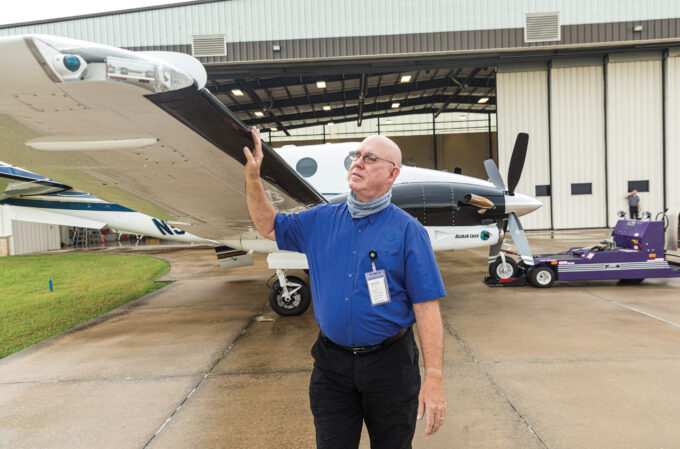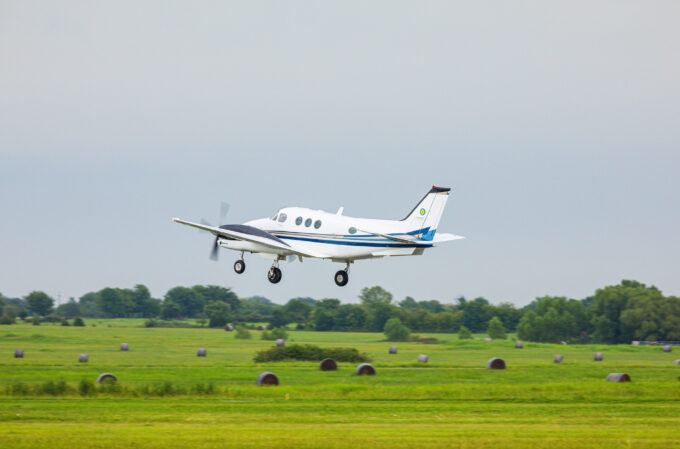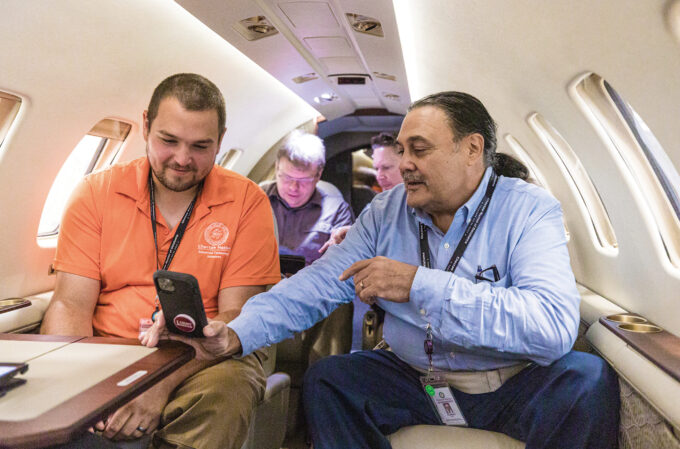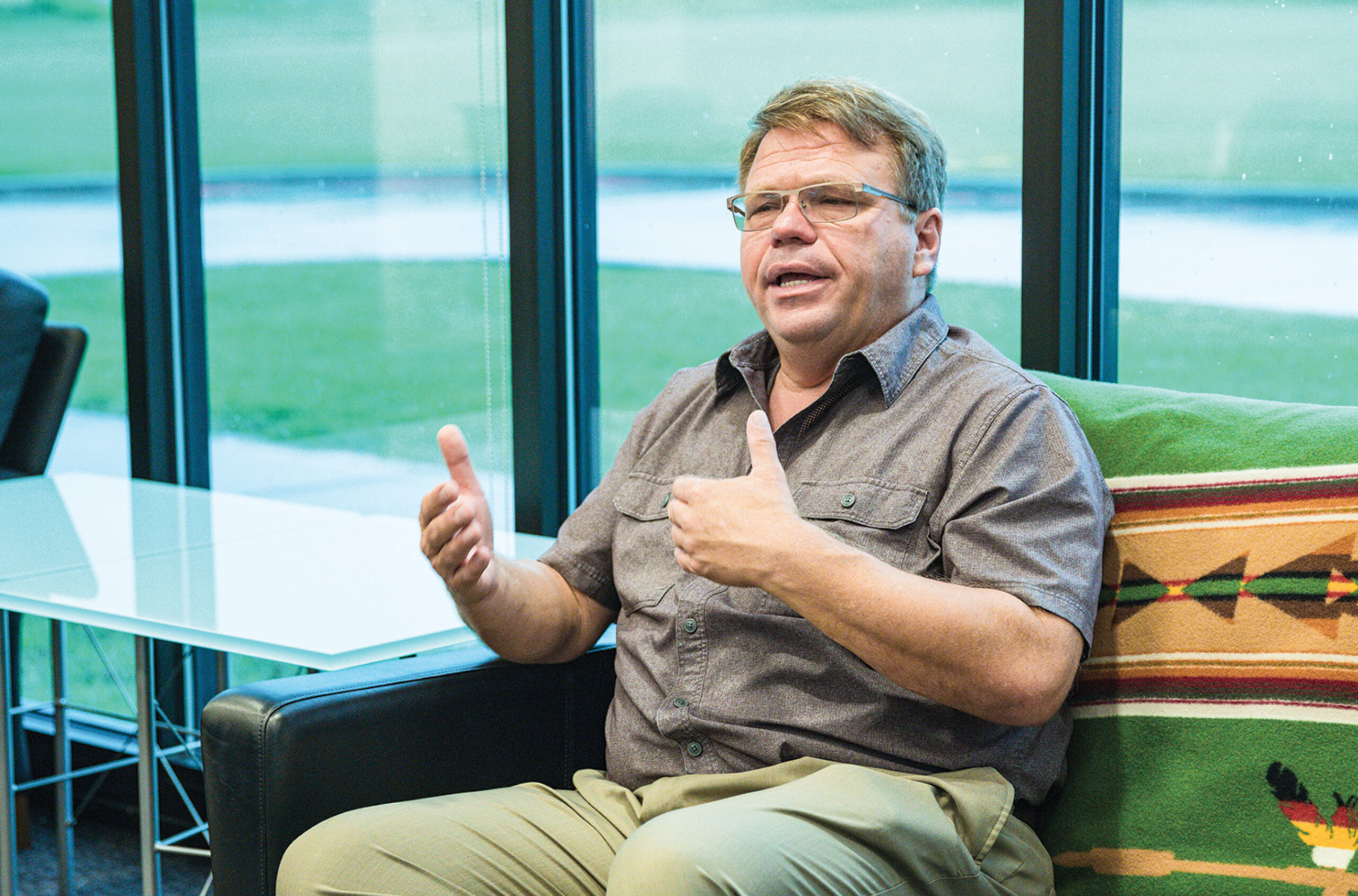Spread over 11 counties of Southeastern Oklahoma, the Choctaw Nation is the third-largest recognized tribe in the U.S., with more than 200,000 members. The nation has thriving farms, ranches, manufacturing businesses, resorts, museums, day care centers and health centers serving tribal members, but fewer than 85,000 live in Oklahoma.
Today, Choctaw members live in every state. Keeping the tribal community connected is important but challenging to do from rural Oklahoma.
“We have tribal members all across the country,” said Chief Gary Batton, “So we fly out in the plane and stay in touch with them, so they know they are an integral part of the family.”
The Choctaw Nation of Oklahoma has relied on business aviation for many years and currently flies a Citation Encore and a King Air 90 with three full-time pilots. In a normal year, the operation averages about 400 flight hours, also flying for the nation’s commercial businesses, government affairs at the state and federal level, and frequent charitable or humanitarian missions.
“When we fly out to have a community meeting, we have our Choctaw language instructors with us and people who I call our ‘culture carriers.’ ”
GARY BATTON Chief, Choctaw Nation of Oklahoma
“We cover the whole Lower 48,” said Al Cherry, director of flight operations. “For tribal affairs, we’ll take our leadership to meet with the federal government in Washington, DC, to Oklahoma City, or Albuquerque [where the Bureau of Indian Affairs has a major office].”
From the Ground Up
Until 2001, the nation had a series of airplanes with a management company. Then it set up its own flight operation. That year, a King Air was purchased and Cherry, a former pilot with the same management company, was hired to run the flying in-house.
In that first year, Cherry established procedures for maintenance, scheduling and training, while overseeing the financials and flying more than 400 hours. He quickly hired a second captain, Quentin McLarry, as chief pilot, for added safety and dispatch availability. Now, Choctaw Nation flies 75% of missions two-pilot on all the aircraft.
“When I was hired, it encompassed setting up all the flight operations for the nation,” said Cherry. “Basically, I turned to NBAA. I went to an operations manual seminar, came back and started plugging our procedures into the NBAA template.”
During Cherry’s 20 years with the Choctaw Nation, the tribal administration and commercial businesses have grown from 500 people to more than 8,000 employees. With travel picking up, the tribal leadership in 2007 asked Cherry to look into buying a jet.
He already had.
“I’d always kept on top of the market, so when they were ready, I could give them all the options right away,” said Cherry. “I got them all the information on cost, speed, run profiles, performance and range.”
Together, the tribal leadership and Cherry evaluated the budget and various mission profiles before deciding on the Encore.

Al Cherry, director of flight operations, inspects the leading edge of the King Air 90's wing.
“The main thing was capacity,” said Cherry. “The community meetings and cultural events, whenever we go to those, we know we’re carrying enough people and gear to max out the airplane.”
The Encore’s seven seats and 1,000-mile range were a solid fit. Even still, when the Choctaw Nation holds a cultural event in a distant city, some tribal members will still drive or travel by airline to join.
Faith, Family, Culture
“When we fly out to a community meeting, we have our Choctaw language instructors with us and people who I call our ‘culture carriers,’” said Batton. “We also have representatives from our tribal programs and services, such as higher education, health and small business administration.”
The Choctaw Nation has about 20 community meetings a year around the country, making 10 trips with both the King Air and Encore flying. Taking place over a weekend, a community meeting trip always includes two destinations.
On a Friday, for example, the tribal leadership will fly out for a community meeting in Tucson on Saturday, then fly to San Diego for another community meeting on Sunday, then fly back to the headquarters in Durant, OK. The larger gatherings draw up to 500 people.
“Many of these tribal members have never been to our headquarters since their grandparents left Oklahoma,” said Batton. “It goes back to our values of faith, family and culture. They need to know they’re part of the family of the Choctaw Nation.”
“Airplanes, if you don’t fly them, actually need more maintenance. So, during COVID, we’ve made more compassionate flights for the Veterans Airlift Command. ”
AL CHERRY Director of Flight Operations, Choctaw Nation of Oklahoma
Most community meetings are scheduled over the summer, when children are out of school and can attend. Those months are busy for the flight operation, but so is October through May, when Congress and state legislatures are in session.
That government-to-government travel is important. Recent meetings in Washington, DC and Albuquerque helped the Choctaw Nation secure a $10 million annual matching grant over 10 years for a new health clinic.
“I think the $100 million for our health center justifies the plane going to DC,” said Batton.

The Choctaw Nation’s aircraft are based at Oklahoma’s Durant Regional Airport (DUA)
Under One Roof
With business aviation playing such a critical role in its operations, the Choctaw Nation has invested wisely in the flight operation over the years. When the Encore was added in 2007, Cherry hired a third pilot, Senior Captain John Wesley.
The team also upgraded the King Air with a new interior, Garmin G1000 avionics and a paint scheme to match the other airplane. That year, Cherry was so busy with the jet acquisition and planning the new hangar at Durant Regional Airport, that he sent McLarry to earn his type rating before going himself.
“In 2007, we didn’t have a hangar here in Durant that was big enough for both airplanes,” said Cherry. “The nearest hangar was in McAlester, 75 miles northeast. So, we had one airplane here and one in McAlester, and we would shuffle them back and forth depending on the mission and which plane we needed down here.”
The nation asked Cherry to design a hangar that could accommodate the flight operation for the next 100 years. He built a facility that now houses the Encore, the King Air and a Cessna 172 used for aerial photography and geographic mapping.

The tribe's airplanes often fly full during community meeting trips.
Honoring Veterans
During the COVID-19 pandemic, flying for community meetings and tribal business slowed considerably, but the lull enabled the Choctaw Nation to increase the use of its aircraft for another important mission – flying wounded American service members for Veterans Airlift Command (VAC).
“Airplanes, if you don’t fly them, actually need more maintenance,” explained Cherry. “So, during COVID, we’ve made more compassionate flights for VAC.”
With nearly 200 missions flown, the Choctaw Nation is VAC’s top flight provider. Cherry calls those trips the best part of his job.
“What better cause? Our veterans have sacrificed so much for us,” said Batton. “We’ve always had that giving heart,” he explained. “We are Choctaw, we’re Oklahomans, yes, and we’re very proud to be Americans. I believe we need to support those who fought for the freedoms we have.”
Learn more about the Choctaw Nation of Oklahoma at choctawnation.com.
44,000 Acres of Ranch Land for Advanced Aviation Research

About 60 miles north of the Choctaw Nation’s tribal headquarters and flight operation in Durant, OK, the Choctaw-owned Daisy Ranch comprises 44,000 acres of flat, isolated land.
When James Grimsley, the Choctaw Nation’s executive director for advanced technology initiatives, saw the ranch, “the light bulb immediately went on. It’s an area where we can fly and test early-stage aviation technology,” he said. “Like the restricted airspace the military has for test ranges, but for civil aviation.”
Today, Daisy Ranch is the site of an integration pilot program (IPP) for unmanned aircraft systems (UAS). There, in a partnership between the Choctaw Nation and the FAA, universities, aerospace companies, OEMs and mobility startups are testing new drones.
Daisy Ranch is part of the FAA BEYOND program, testing new technologies and airspace management practices for beyond visual line of sight operation of UAS. The Choctaw Nation has built radars and a control center at the site and is designing a fabrication hangar. The Choctaw Nation and its partners plan to test drone operations and eventually electric vertical takeoff and landing passenger vehicles.
“The Choctaw Nation was the first tribe in history selected for an IPP technology program; it was a very tough competition,” said Grimsley. “The electrification of flight is opening up so many possibilities, and a lot of potential for innovative benefits.”
Snapshot
Aircraft: One Citation Encore, one King Air 90 and one Cessna 172
Base: Headquartered at Oklahoma’s Durant Regional Airport (DUA)
Personnel: Three pilots



 International Business Aviation Council Ltd.
International Business Aviation Council Ltd.